Lieutenant General Sir Adrian Paul Ghislain Carton de Wiart VC, KBE, CB, CMG, DSO (5 May 1880 – 5 June 1963) was a British Army officer He served in the Boer War, First World War, and Second World War
VC, KBE, CB, CMG, DSO (5 May 1880 – 5 June 1963) was a British Army officer He served in the Boer War, First World War, and Second World War ; was shot in the face, head, stomach, ankle, leg, hip, and ear; survived two plane crashes; tunnelled out of a prisoner-of-war camp; and bit off his own fingers when a doctor refused to amputate them. Describing his experiences in the First World War,
; was shot in the face, head, stomach, ankle, leg, hip, and ear; survived two plane crashes; tunnelled out of a prisoner-of-war camp; and bit off his own fingers when a doctor refused to amputate them. Describing his experiences in the First World War, he wrote, "Frankly I had enjoyed the war."
he wrote, "Frankly I had enjoyed the war."
 VC, KBE, CB, CMG, DSO (5 May 1880 – 5 June 1963) was a British Army officer He served in the Boer War, First World War, and Second World War
VC, KBE, CB, CMG, DSO (5 May 1880 – 5 June 1963) was a British Army officer He served in the Boer War, First World War, and Second World War ; was shot in the face, head, stomach, ankle, leg, hip, and ear; survived two plane crashes; tunnelled out of a prisoner-of-war camp; and bit off his own fingers when a doctor refused to amputate them. Describing his experiences in the First World War,
; was shot in the face, head, stomach, ankle, leg, hip, and ear; survived two plane crashes; tunnelled out of a prisoner-of-war camp; and bit off his own fingers when a doctor refused to amputate them. Describing his experiences in the First World War, he wrote, "Frankly I had enjoyed the war."
he wrote, "Frankly I had enjoyed the war."
After returning home from service in the Second World War, he was sent to China as Winston Churchill's personal representative. While en route he attended the Cairo Conference.
In his memoirs, Carton de Wiart wrote, "Governments may think and say as they like, but force cannot be eliminated, and it is the only real and unanswerable power. We are told that the pen is mightier than the sword, but I know which of these weapons I would choose."
Carton de Wiart was thought to be a model for the character of Brigadier Ben Ritchie Hook in
Evelyn Waugh's trilogy Sword of Honour.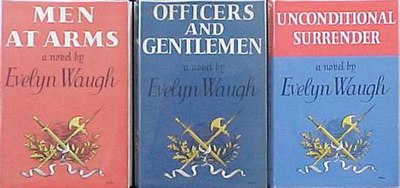
The Oxford Dictionary of National Biography described him thus: "With his black eyepatch and empty sleeve, Carton de Wiart looked like an elegant pirate, and became a figure of legend."
Carton de Wiart was thought to be a model for the character of Brigadier Ben Ritchie Hook in
Evelyn Waugh's trilogy Sword of Honour.

The Oxford Dictionary of National Biography described him thus: "With his black eyepatch and empty sleeve, Carton de Wiart looked like an elegant pirate, and became a figure of legend."
The death of his Irish mother when he was six prompted his father to move the family to Cairo so his father could practise international law. His father was a court magistrate, well connected in Egyptian governmental circles, and was a director of the Cairo Electric Railways.
Carton de Wiart was a Roman Catholic. He learned to speak Arabic.Carton de Wiart was born into an aristocratic family in Brussels, on 5 May 1880, eldest son of Leon Constant Ghislain Carton de Wiart (1854–1915). By his contemporaries, he was widely believed to be an illegitimate son of the King of the Belgians,Leopold II.
He spent his early days in Belgium and in England.
Carton de Wiart was a Roman Catholic. He learned to speak Arabic.Carton de Wiart was born into an aristocratic family in Brussels, on 5 May 1880, eldest son of Leon Constant Ghislain Carton de Wiart (1854–1915). By his contemporaries, he was widely believed to be an illegitimate son of the King of the Belgians,Leopold II.
He spent his early days in Belgium and in England.
In 1891 his English stepmother sent him to a boarding school in England, the Roman Catholic Oratory School, founded by Cardinal John Henry Newman.
Cardinal John Henry Newman.
 Cardinal John Henry Newman.
Cardinal John Henry Newman.
From there he went to Balliol College, Oxford , but left to join the British Army at the time of the Boer War around 1899, where he entered under the false name of "Trooper Carton", and claimed to be 25 years old.
, but left to join the British Army at the time of the Boer War around 1899, where he entered under the false name of "Trooper Carton", and claimed to be 25 years old.
 , but left to join the British Army at the time of the Boer War around 1899, where he entered under the false name of "Trooper Carton", and claimed to be 25 years old.
, but left to join the British Army at the time of the Boer War around 1899, where he entered under the false name of "Trooper Carton", and claimed to be 25 years old.
Carton de Wiart was wounded in the stomach and groin in South Africa early on in the War and invalided home, and his father found out about him leaving college. His father was furious but allowed his son to remain in the army. After another brief period at Oxford, where Aubrey Herbert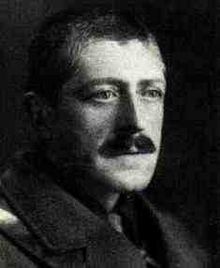 was among his friends, he was given a commission in the Second Imperial Light Horse. He saw action in South Africa again and on 14 September 1901 was given a regular commission as a second lieutenant in the 4th Dragoon Guards.
was among his friends, he was given a commission in the Second Imperial Light Horse. He saw action in South Africa again and on 14 September 1901 was given a regular commission as a second lieutenant in the 4th Dragoon Guards.
Carton de Wiart was transferred to India in 1902. He enjoyed sports, especially shooting and pig sticking.
 was among his friends, he was given a commission in the Second Imperial Light Horse. He saw action in South Africa again and on 14 September 1901 was given a regular commission as a second lieutenant in the 4th Dragoon Guards.
was among his friends, he was given a commission in the Second Imperial Light Horse. He saw action in South Africa again and on 14 September 1901 was given a regular commission as a second lieutenant in the 4th Dragoon Guards.Carton de Wiart was transferred to India in 1902. He enjoyed sports, especially shooting and pig sticking.

Carton de Wiart's serious wound in the Boer War instilled in him a strong desire for physical fitness and he ran, jogged, walked, and played sports on a regular basis. In male company he was 'a delightful character and must hold the world record for bad language.'
After his regiment was transferred to South Africa he was promoted to supernumerary lieutenant on 16 July 1904 and appointed an aide-de-camp to the Commander-in-Chief, Sir Henry Hildyard the following July.
the following July.
He describes this period lasting up to 1914 as his "heyday". His light duties as aide-de-camp gave him time for polo, another of his interests.
 the following July.
the following July.He describes this period lasting up to 1914 as his "heyday". His light duties as aide-de-camp gave him time for polo, another of his interests.
By 1907, although Carton de Wiart had now served in the British Army for eight years, he had remained a Belgian subject. On 13 September of that year, he took the oath of allegiance to Edward VII and was formally naturalised as a British subject.
Carton de Wiart was well connected in European circles, his two closest cousins being Count Henri Carton de Wiart, Prime Minister of Belgium from 1920 to 1921, and Baron Edmond Carton de Wiart, political secretary to the King of Belgium and director of La Société Générale de Belgique. While on leave, he travelled extensively throughout central Europe, using his Catholic aristocratic connections to shoot at country estates in Bohemia, Austria, Hungary and Bavaria.
Prime Minister of Belgium from 1920 to 1921, and Baron Edmond Carton de Wiart, political secretary to the King of Belgium and director of La Société Générale de Belgique. While on leave, he travelled extensively throughout central Europe, using his Catholic aristocratic connections to shoot at country estates in Bohemia, Austria, Hungary and Bavaria.
 Prime Minister of Belgium from 1920 to 1921, and Baron Edmond Carton de Wiart, political secretary to the King of Belgium and director of La Société Générale de Belgique. While on leave, he travelled extensively throughout central Europe, using his Catholic aristocratic connections to shoot at country estates in Bohemia, Austria, Hungary and Bavaria.
Prime Minister of Belgium from 1920 to 1921, and Baron Edmond Carton de Wiart, political secretary to the King of Belgium and director of La Société Générale de Belgique. While on leave, he travelled extensively throughout central Europe, using his Catholic aristocratic connections to shoot at country estates in Bohemia, Austria, Hungary and Bavaria.
Following his return to England, he rode with the famous Duke of Beaufort's Hunt where he met, among others, the future field marshal, Sir Henry Maitland Wilson, and the future air marshal, Sir Edward Leonard Ellington.
where he met, among others, the future field marshal, Sir Henry Maitland Wilson, and the future air marshal, Sir Edward Leonard Ellington. He was promoted to captain on 26 February 1910.
He was promoted to captain on 26 February 1910.
 where he met, among others, the future field marshal, Sir Henry Maitland Wilson, and the future air marshal, Sir Edward Leonard Ellington.
where he met, among others, the future field marshal, Sir Henry Maitland Wilson, and the future air marshal, Sir Edward Leonard Ellington. He was promoted to captain on 26 February 1910.
He was promoted to captain on 26 February 1910.
In 1908 he married Countess Friederike Maria Karoline Henriette Rosa Sabina Franziska Fugger von Babenhausen (1887 Klagenfurt – 1949 Vienna), eldest daughter of Karl Ludwig, 4th Fürst (Prince) Fugger-Babenhausen and Princess Eleonora Fugger von Babenhausen of Klagenfurt, Austria . They had two daughters, the elder of whom Anita (born 1909, deceased) was the maternal grandmother of the war correspondent Anthony Loyd (born 1966).
. They had two daughters, the elder of whom Anita (born 1909, deceased) was the maternal grandmother of the war correspondent Anthony Loyd (born 1966).
 . They had two daughters, the elder of whom Anita (born 1909, deceased) was the maternal grandmother of the war correspondent Anthony Loyd (born 1966).
. They had two daughters, the elder of whom Anita (born 1909, deceased) was the maternal grandmother of the war correspondent Anthony Loyd (born 1966).
In his memoirs, Happy Odyssey, Carton de Wiart makes no reference to his wife or to his daughters.
When the First World War broke out, Carton de Wiart was en route to British Somaliland where a low level war was underway against the followers of Mohammed bin Abdullah, called the "Mad Mullah" by the British.
where a low level war was underway against the followers of Mohammed bin Abdullah, called the "Mad Mullah" by the British.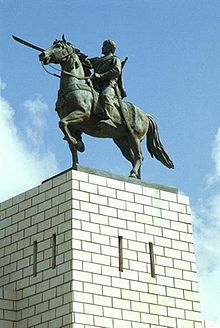 Carton de Wiart had been seconded to the Somaliland Camel Corps.
Carton de Wiart had been seconded to the Somaliland Camel Corps. A staff officer with the corps was Hastings Ismay, later Lord Ismay, Churchill's military advisor.
A staff officer with the corps was Hastings Ismay, later Lord Ismay, Churchill's military advisor.
 where a low level war was underway against the followers of Mohammed bin Abdullah, called the "Mad Mullah" by the British.
where a low level war was underway against the followers of Mohammed bin Abdullah, called the "Mad Mullah" by the British. Carton de Wiart had been seconded to the Somaliland Camel Corps.
Carton de Wiart had been seconded to the Somaliland Camel Corps. A staff officer with the corps was Hastings Ismay, later Lord Ismay, Churchill's military advisor.
A staff officer with the corps was Hastings Ismay, later Lord Ismay, Churchill's military advisor.
In an attack upon an enemy fort at Shimber Berris, Carton de Wiart was shot twice
Carton de Wiart was shot twice in the face, losing his eye and also a portion of his ear. He was awarded the Distinguished Service Order (DSO) on 15 May 1915.[14]
in the face, losing his eye and also a portion of his ear. He was awarded the Distinguished Service Order (DSO) on 15 May 1915.[14]
 Carton de Wiart was shot twice
Carton de Wiart was shot twice in the face, losing his eye and also a portion of his ear. He was awarded the Distinguished Service Order (DSO) on 15 May 1915.[14]
in the face, losing his eye and also a portion of his ear. He was awarded the Distinguished Service Order (DSO) on 15 May 1915.[14]
 In February 1915, he embarked on a steamer for France.
In February 1915, he embarked on a steamer for France. Carton de Wiart took part in the fighting on the Western Front, commanding successively three infantry battalions and a brigade. He was wounded seven more times in the war, losing his left hand in 1915 and pulling off his fingers when a doctor declined to remove them. He was shot through the skull and ankle at the Battle of the Somme, through the hip at the Battle of Passchendaele, through the leg at Cambrai
Carton de Wiart took part in the fighting on the Western Front, commanding successively three infantry battalions and a brigade. He was wounded seven more times in the war, losing his left hand in 1915 and pulling off his fingers when a doctor declined to remove them. He was shot through the skull and ankle at the Battle of the Somme, through the hip at the Battle of Passchendaele, through the leg at Cambrai , and through the ear at Arras.
, and through the ear at Arras. He went to the Sir Douglas Shield's Nursing Home to recover from his injuries.
He went to the Sir Douglas Shield's Nursing Home to recover from his injuries.
Carton de Wiart was promoted to temporary major in March 1916, from 15 February to 25 March.
He subsequently attained the rank of temporary lieutenant colonel on 18 July, was brevetted to major on 1 January 1917 and was promoted to temporary brigadier general on 12 January 1917.
He was appointed an Officer of the Order of the Crown of Belgium in April 1917.
On 3 June 1917, Carton de Wiart was brevetted to lieutenant-colonel. On 18 July, he was promoted to the substantive rank of major in the Dragoon Guards.
He subsequently attained the rank of temporary lieutenant colonel on 18 July, was brevetted to major on 1 January 1917 and was promoted to temporary brigadier general on 12 January 1917.
He was appointed an Officer of the Order of the Crown of Belgium in April 1917.
On 3 June 1917, Carton de Wiart was brevetted to lieutenant-colonel. On 18 July, he was promoted to the substantive rank of major in the Dragoon Guards.
He was awarded the Belgian Croix de Guerre in March 1918, an d was appointed a Companion of the Order of St Michael and St George in the King's Birthday Honours List in June. Three days before the end of the war, on 8 November, Carton de Wiart was given command of a brigade with the rank of temporary brigadier general.
d was appointed a Companion of the Order of St Michael and St George in the King's Birthday Honours List in June. Three days before the end of the war, on 8 November, Carton de Wiart was given command of a brigade with the rank of temporary brigadier general.
 d was appointed a Companion of the Order of St Michael and St George in the King's Birthday Honours List in June. Three days before the end of the war, on 8 November, Carton de Wiart was given command of a brigade with the rank of temporary brigadier general.
d was appointed a Companion of the Order of St Michael and St George in the King's Birthday Honours List in June. Three days before the end of the war, on 8 November, Carton de Wiart was given command of a brigade with the rank of temporary brigadier general.
Carton de Wiart received the Victoria Cross (VC), the highest award for gallantry in combat that can be awarded to British Empire forces, in 1916. He was 36 years old, and a temporary lieutenant-colonel in the 4th Dragoon Guards (Royal Irish), British Army, attached to the Gloucestershire Regiment, commanding the 8th Battalion, when the following events took place on 2/3 July 1916 at La Boiselle
British Army, attached to the Gloucestershire Regiment, commanding the 8th Battalion, when the following events took place on 2/3 July 1916 at La Boiselle , France, as recorded in the official citation:
, France, as recorded in the official citation:
 , France, as recorded in the official citation:
, France, as recorded in the official citation:
His Victoria Cross is displayed at the National Army Museum, Chelsea.%201st%20Royal%20Dragoons.jpg)
%201st%20Royal%20Dragoons.jpg)
In his autobiography, Happy Odyssey, there is no mention of his VC and it fell to the publishers to add a special section covering the award. This section does not appear in the Fifth Impression (London: Jonathan Cape 1951.)
Despite all his wounds in the war, Carton de Wiart said at the end: "Frankly, I had enjoyed the war...."[3]
Poland desperately needed support, as it was engaged with the Bolshevik Russia in the Polish-Soviet War, the Ukrainians in thePolish-Ukrainian War, the Lithuanians in the Polish-Lithuanian War and the Czechs in the Czech-Polish border conflicts. There he met Ignacy Jan Paderewski
the Lithuanians in the Polish-Lithuanian War and the Czechs in the Czech-Polish border conflicts. There he met Ignacy Jan Paderewski , the pianist and premier, Marshal Józef Piłsudski, the Chief of State and military commander, and General Maxime Weygand, head of the French military mission in mid-1920. Charles de Gaulle was attached to the French military mission.At the end of the war Carton de Wiart was sent to Poland as second in command of the British-Poland Military Mission under Genera
, the pianist and premier, Marshal Józef Piłsudski, the Chief of State and military commander, and General Maxime Weygand, head of the French military mission in mid-1920. Charles de Gaulle was attached to the French military mission.At the end of the war Carton de Wiart was sent to Poland as second in command of the British-Poland Military Mission under Genera lLouis Botha. Carton de Wiart was appointed a Companion of the Order of the Bath in the 1919 King's Birthday Honours List
lLouis Botha. Carton de Wiart was appointed a Companion of the Order of the Bath in the 1919 King's Birthday Honours List
After a brief period, he replaced General Botha in the mission to Poland.
 the Lithuanians in the Polish-Lithuanian War and the Czechs in the Czech-Polish border conflicts. There he met Ignacy Jan Paderewski
the Lithuanians in the Polish-Lithuanian War and the Czechs in the Czech-Polish border conflicts. There he met Ignacy Jan Paderewski , the pianist and premier, Marshal Józef Piłsudski, the Chief of State and military commander, and General Maxime Weygand, head of the French military mission in mid-1920. Charles de Gaulle was attached to the French military mission.At the end of the war Carton de Wiart was sent to Poland as second in command of the British-Poland Military Mission under Genera
, the pianist and premier, Marshal Józef Piłsudski, the Chief of State and military commander, and General Maxime Weygand, head of the French military mission in mid-1920. Charles de Gaulle was attached to the French military mission.At the end of the war Carton de Wiart was sent to Poland as second in command of the British-Poland Military Mission under Genera lLouis Botha. Carton de Wiart was appointed a Companion of the Order of the Bath in the 1919 King's Birthday Honours List
lLouis Botha. Carton de Wiart was appointed a Companion of the Order of the Bath in the 1919 King's Birthday Honours ListAfter a brief period, he replaced General Botha in the mission to Poland.
One of his tasks soon after his arrival was to attempt to make peace between the Poles and the Ukrainian nationalists under Simon Petlyura. The Ukrainians were besieging the city of Lwów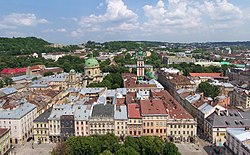 (Lvov; Lemberg). He was unsuccessful and formed a negative view of Petlyura, especially after Ukrainian forces machine gunned his train, killing two Polish officers aboard.
(Lvov; Lemberg). He was unsuccessful and formed a negative view of Petlyura, especially after Ukrainian forces machine gunned his train, killing two Polish officers aboard.
 (Lvov; Lemberg). He was unsuccessful and formed a negative view of Petlyura, especially after Ukrainian forces machine gunned his train, killing two Polish officers aboard.
(Lvov; Lemberg). He was unsuccessful and formed a negative view of Petlyura, especially after Ukrainian forces machine gunned his train, killing two Polish officers aboard.
From there he went on to Paris to report on Polish conditions to the British prime minister, David Lloyd George and to General Sir Henry Wilson.
Lloyd George was not sympathetic to Poland and, much to Carton de Wiart's annoyance, Britain sent next to no military supplies. Then he went back to Poland and many more front line adventures, this time in the Bolshevik zone, where the situation was grave with Warsaw threatened. During this time he had significant interaction with the nuntius (dean of the diplomatic corps) Cardinal Achille Ratti, later Pius XI, who wanted Carton de Wiart's advice as to whether to evacuate the diplomatic corps from Warsaw. The diplomats moved to Poznań, but the Italians remained in Warsaw along with Ratti.
later Pius XI, who wanted Carton de Wiart's advice as to whether to evacuate the diplomatic corps from Warsaw. The diplomats moved to Poznań, but the Italians remained in Warsaw along with Ratti.
Lloyd George was not sympathetic to Poland and, much to Carton de Wiart's annoyance, Britain sent next to no military supplies. Then he went back to Poland and many more front line adventures, this time in the Bolshevik zone, where the situation was grave with Warsaw threatened. During this time he had significant interaction with the nuntius (dean of the diplomatic corps) Cardinal Achille Ratti,
 later Pius XI, who wanted Carton de Wiart's advice as to whether to evacuate the diplomatic corps from Warsaw. The diplomats moved to Poznań, but the Italians remained in Warsaw along with Ratti.
later Pius XI, who wanted Carton de Wiart's advice as to whether to evacuate the diplomatic corps from Warsaw. The diplomats moved to Poznań, but the Italians remained in Warsaw along with Ratti.
From all these affairs, Carton de Wiart developed a sympathy with the Poles and supported their claims to the eastern Galicia. This caused disagreement with Lloyd George at their next meeting, but was appreciated by the Poles. At one time during his Warsaw stay he was a second in a duel between Polish members of the Mysliwski Club, the other second being Baron Carl Gustaf Emil Mannerheim, later commander-in-chief of Finnish armies in World War II and President of Finland. Norman Davies reports that he was "...compromised in a gun-running operation from Budapest using stolen wagon-lits".
He became rather close to the Polish leader, Marshal Piłsudski. After an aircraft crash occasioning a brief period in Lithuanian captivity, he went back to England to report, this time to the Secretary of State for War, Winston Churchill. He passed on to Churchill Piłsudski's prediction that the White Russian offensive under General Anton Denikin directed at Moscow would fail. It did shortly thereafter. Denikin's army carried out mass executions and plunder, in what was later known as the White Terror. In the town of Maykop in Circassia
directed at Moscow would fail. It did shortly thereafter. Denikin's army carried out mass executions and plunder, in what was later known as the White Terror. In the town of Maykop in Circassia during September 1918, more than 4000 people were massacred by General Pokrovsky's forcesChurchill was more sympathetic to Polish needs than Lloyd George and succeeded, over Lloyd George's objections, in sending some materiel to Poland.
during September 1918, more than 4000 people were massacred by General Pokrovsky's forcesChurchill was more sympathetic to Polish needs than Lloyd George and succeeded, over Lloyd George's objections, in sending some materiel to Poland.
 directed at Moscow would fail. It did shortly thereafter. Denikin's army carried out mass executions and plunder, in what was later known as the White Terror. In the town of Maykop in Circassia
directed at Moscow would fail. It did shortly thereafter. Denikin's army carried out mass executions and plunder, in what was later known as the White Terror. In the town of Maykop in Circassia
On 27 July 1920, Carton de Wiart was appointed an Aide-de-camp to the King, and brevetted to colonel.
He was active in August 1920, when the Red Army were at the gates of Warsaw. While out on his observation train, he was attacked by a group of Red cavalry, and fought them off with his revolver from the footplate of his train, at one point falling on the track and re-boarding quickly.

He was active in August 1920, when the Red Army were at the gates of Warsaw. While out on his observation train, he was attacked by a group of Red cavalry, and fought them off with his revolver from the footplate of his train, at one point falling on the track and re-boarding quickly.
When the Poles won the war, the British Military Mission was wound up. Carton de Wiart was promoted to temporary brigadier general and also appointed to the local rank ofmajor general on 1 January.
He was promoted to the substantive rank of colonel on 21 June 1922, with seniority from 27 July 1920 and relinquished his local rank of major general on 1 April 1923, going on half-pay as a colonel at the same time.
Carton de Wiart officially retired from the army on 19 December, with the honorary rank of major general.
He was promoted to the substantive rank of colonel on 21 June 1922, with seniority from 27 July 1920 and relinquished his local rank of major general on 1 April 1923, going on half-pay as a colonel at the same time.
Carton de Wiart officially retired from the army on 19 December, with the honorary rank of major general.
His last Polish aide de camp was Prince Karol Mikołaj Radziwiłł, who inherited a large 500,000 acre (2,000 km²) estate in eastern Poland when the Communists killed his uncle. They became friends and Carton de Wiart was given the use of a large estate called Prostyń, in the Pripet Marshes, a large wetland area larger than Ireland and well known for waterfowl. Since borders have changed, it is now at the border between Belarus and Ukraine. Carton de Wiart's home was a converted hunting lodge on an island, only a few miles from the Soviet border.
who inherited a large 500,000 acre (2,000 km²) estate in eastern Poland when the Communists killed his uncle. They became friends and Carton de Wiart was given the use of a large estate called Prostyń, in the Pripet Marshes, a large wetland area larger than Ireland and well known for waterfowl. Since borders have changed, it is now at the border between Belarus and Ukraine. Carton de Wiart's home was a converted hunting lodge on an island, only a few miles from the Soviet border.
 who inherited a large 500,000 acre (2,000 km²) estate in eastern Poland when the Communists killed his uncle. They became friends and Carton de Wiart was given the use of a large estate called Prostyń, in the Pripet Marshes, a large wetland area larger than Ireland and well known for waterfowl. Since borders have changed, it is now at the border between Belarus and Ukraine. Carton de Wiart's home was a converted hunting lodge on an island, only a few miles from the Soviet border.
who inherited a large 500,000 acre (2,000 km²) estate in eastern Poland when the Communists killed his uncle. They became friends and Carton de Wiart was given the use of a large estate called Prostyń, in the Pripet Marshes, a large wetland area larger than Ireland and well known for waterfowl. Since borders have changed, it is now at the border between Belarus and Ukraine. Carton de Wiart's home was a converted hunting lodge on an island, only a few miles from the Soviet border.
In this location Carton de Wiart spent the rest of the interwar years. In his memoirs he said "I think I shot every day of those 15 years I spent in the marshes and the pleasure never palled".
He returned to England for three months each year during the winter, returning in time for the breaking up of the ice on the frozen lakes and rivers.
He returned to England for three months each year during the winter, returning in time for the breaking up of the ice on the frozen lakes and rivers.
 After 15 years, Carton de Wiart's Polish peaceful life was interrupted by the oncoming war in July 1939 when he was recalled and appointed to his old job, as head of the British Military Mission to Poland.
After 15 years, Carton de Wiart's Polish peaceful life was interrupted by the oncoming war in July 1939 when he was recalled and appointed to his old job, as head of the British Military Mission to Poland.Poland was attacked by Nazi Germany on 1 September and on 17 September the Soviets allied with Germany attacked Poland from the east. Soon Soviet forces overran Prostyń and Carton de Wiart lost all his guns, rods, clothes, and furniture. They were packed up by the Soviets and stored in the Minsk Museum, but destroyed by the Germans in later fighting. He never saw the area again, but as he said "...they could not take my memories".
Carton de Wiart met with the Polish commander-in-chief, Marshal of Poland Edward Rydz-Śmigły in late August 1939 and formed a rather low opinion of his capabilities. He strongly urged Rydz-Śmigły to pull Polish forces back beyond the Vistula River, but was unsuccessful.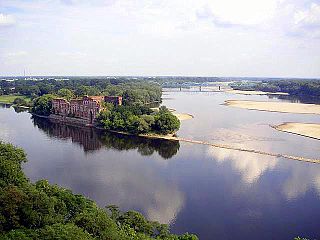

The other advice he offered, to have the seagoing units of the Polish fleet leave the Baltic Sea, was, after much argument, finally adopted. This fleet made a significant contribution to the Allied cause, especially the several modern destroyers and submarines.
As Polish resistance weakened, Carton de Wiart evacuated his mission from Warsaw along with the Polish government. Together with the Polish commander Rydz-Śmigły, Carton de Wiart made his way with the rest of the British Mission to the Romanian border with both the Germans and the Soviets in pursuit.
His car convoy was attacked by the Luftwaffe on the road, and the wife of one of his aides was killed. He was in danger of arrest in Romania and got out by aircraft on 21 September with a false passport, just in time as the pro Allied Romanian prime minister,Armand Calinescu, was assassinated that day.
was assassinated that day.
 was assassinated that day.
was assassinated that day.
Recalled to a special appointment in the army in the autumn of 1939, Carton de Wiart reverted to his former rank of colonel. He was granted the rank of acting major-general on 28 November.
After a brief stint in command of the 61st Division in the Midlands of England, Carton de Wiart was summoned in April 1940 to take charge of a hastily drawn together Anglo-French force to occupy Namsos, a small town in middle Norway. His orders were to take the city of Trondheim, 125 miles (200 km) to the south, in conjunction with a naval attack and an advance from the south by troops landed at Åndalsnes.
After a brief stint in command of the 61st Division in the Midlands of England, Carton de Wiart was summoned in April 1940 to take charge of a hastily drawn together Anglo-French force to occupy Namsos, a small town in middle Norway. His orders were to take the city of Trondheim, 125 miles (200 km) to the south, in conjunction with a naval attack and an advance from the south by troops landed at Åndalsnes.

He flew to Namsos to review the location before the troops arrived. When his Short Sunderland flying boat came in for a landing, it was attacked by a German fighter and his aide was wounded and had to be evacuated. After the French Alpine troops landed (without their transport mules and missing straps for their skis), the Luftwaffe bombed and destroyed the town of Namsos. The British landed without transport, skis, artillery, or air cover. The French stayed put in Namsos for the remainder of the short campaign.
flying boat came in for a landing, it was attacked by a German fighter and his aide was wounded and had to be evacuated. After the French Alpine troops landed (without their transport mules and missing straps for their skis), the Luftwaffe bombed and destroyed the town of Namsos. The British landed without transport, skis, artillery, or air cover. The French stayed put in Namsos for the remainder of the short campaign.
 flying boat came in for a landing, it was attacked by a German fighter and his aide was wounded and had to be evacuated. After the French Alpine troops landed (without their transport mules and missing straps for their skis), the Luftwaffe bombed and destroyed the town of Namsos. The British landed without transport, skis, artillery, or air cover. The French stayed put in Namsos for the remainder of the short campaign.
flying boat came in for a landing, it was attacked by a German fighter and his aide was wounded and had to be evacuated. After the French Alpine troops landed (without their transport mules and missing straps for their skis), the Luftwaffe bombed and destroyed the town of Namsos. The British landed without transport, skis, artillery, or air cover. The French stayed put in Namsos for the remainder of the short campaign.
Despite these handicaps, Carton de Wiart managed to move his forces over the mountains and down to Trondheimsfjord , where they were shelled by German destroyers. They had no artillery to challenge the German ships. It soon became apparent that the whole Norwegian campaign was fast becoming a failure. The naval attack on Trondheim, the reason for the Namsos landing, did not happen and his troops were exposed without guns, transport, air cover or skis in a foot and a half of snow. They were being attacked by German ski troops, machine gunned and bombed from the air, and the German Navy was landing troops to his rear. He recommended withdrawal but was asked to hold his position for political reasons, which he did.
, where they were shelled by German destroyers. They had no artillery to challenge the German ships. It soon became apparent that the whole Norwegian campaign was fast becoming a failure. The naval attack on Trondheim, the reason for the Namsos landing, did not happen and his troops were exposed without guns, transport, air cover or skis in a foot and a half of snow. They were being attacked by German ski troops, machine gunned and bombed from the air, and the German Navy was landing troops to his rear. He recommended withdrawal but was asked to hold his position for political reasons, which he did.
 , where they were shelled by German destroyers. They had no artillery to challenge the German ships. It soon became apparent that the whole Norwegian campaign was fast becoming a failure. The naval attack on Trondheim, the reason for the Namsos landing, did not happen and his troops were exposed without guns, transport, air cover or skis in a foot and a half of snow. They were being attacked by German ski troops, machine gunned and bombed from the air, and the German Navy was landing troops to his rear. He recommended withdrawal but was asked to hold his position for political reasons, which he did.
, where they were shelled by German destroyers. They had no artillery to challenge the German ships. It soon became apparent that the whole Norwegian campaign was fast becoming a failure. The naval attack on Trondheim, the reason for the Namsos landing, did not happen and his troops were exposed without guns, transport, air cover or skis in a foot and a half of snow. They were being attacked by German ski troops, machine gunned and bombed from the air, and the German Navy was landing troops to his rear. He recommended withdrawal but was asked to hold his position for political reasons, which he did.
After orders and counterorders from London, the decision to evacuate was made. However, on the date set to evacuate the troops, the ships did not show. The next night a naval force finally arrived, led through the fog by Lord Louis Mountbatten. The transports successfully evacuated the entire force amid heavy bombardment by the Germans, resulting in the
The transports successfully evacuated the entire force amid heavy bombardment by the Germans, resulting in the  sinking of two destroyers, the French Bison and British HMS Afridi.
sinking of two destroyers, the French Bison and British HMS Afridi.
 The transports successfully evacuated the entire force amid heavy bombardment by the Germans, resulting in the
The transports successfully evacuated the entire force amid heavy bombardment by the Germans, resulting in the  sinking of two destroyers, the French Bison and British HMS Afridi.
sinking of two destroyers, the French Bison and British HMS Afridi.
Carton de Wiart arrived back at the British naval base of Scapa Flow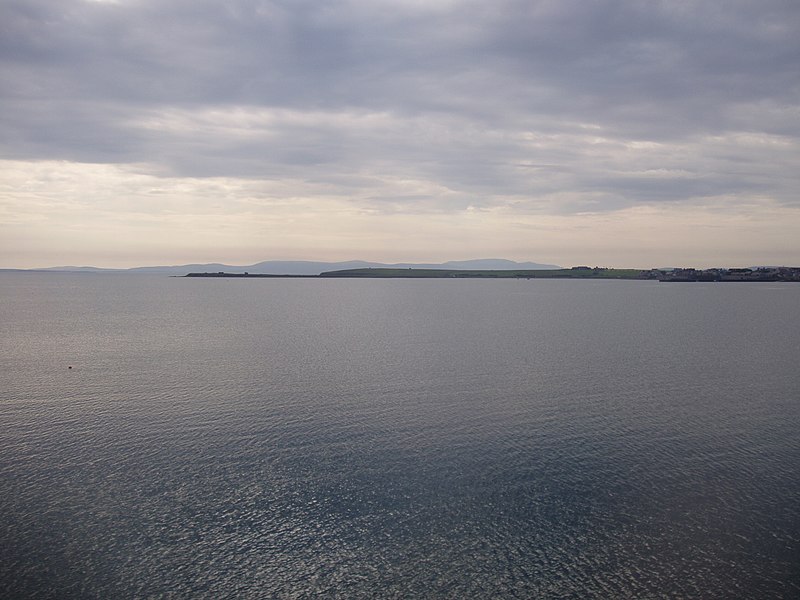 in the Orkney Islands
in the Orkney Islands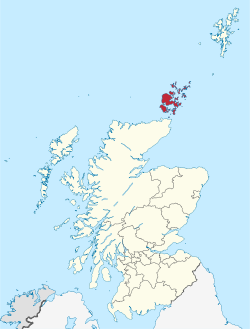 on 5 May 1940 – his 60th birthday.
on 5 May 1940 – his 60th birthday.
 in the Orkney Islands
in the Orkney Islands on 5 May 1940 – his 60th birthday.
on 5 May 1940 – his 60th birthday.
Carton de Wiart was posted back to the command of the 61st Division, which was soon transferred to Northern Ireland as a defence against invasion. However, following the arrival of Lieutenant-General Sir Henry Royds Pownall as Commander-in-Chief in Northern Ireland, Carton de Wiart was told that he was too old to command a division on active duty.
Advanced to temporary major-general on 28 November 1940, he remained inactive very briefly, as he was appointed as head of the British-Yugoslavian Military Mission on 5 April 1941. Hitler was preparing to invade the country and the Yugoslavs asked for British help. Carton de Wiart travelled in a Wellington Bomber to Belgrade, 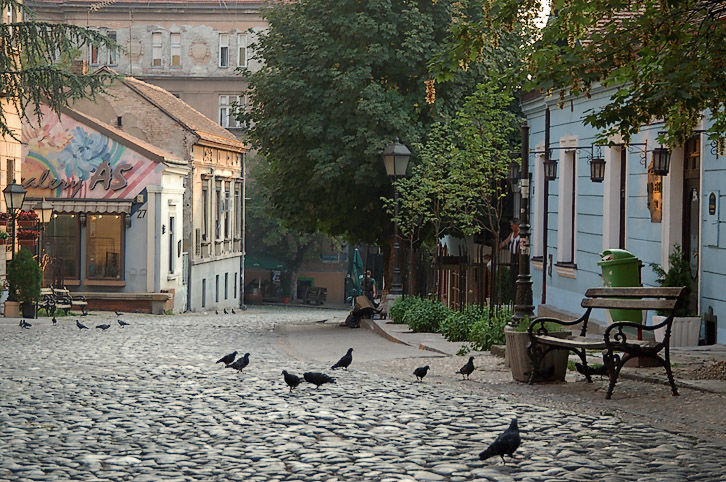 Serbia to negotiate with the Yugoslavian government.
Serbia to negotiate with the Yugoslavian government.
 Serbia to negotiate with the Yugoslavian government.
Serbia to negotiate with the Yugoslavian government.
After refuelling in Malta, the aircraft left for Cairo with enemy territory to the north and south. Both engines failed off the coast of Italian-controlled Libya, and the plane crash landed in the sea about a mile from land. Carton de Wiart was knocked unconscious, but the cold water brought him to. When the plane broke up and sank, he and the rest aboard were forced to swim to shore. They were captured by the Italian authorities.
about a mile from land. Carton de Wiart was knocked unconscious, but the cold water brought him to. When the plane broke up and sank, he and the rest aboard were forced to swim to shore. They were captured by the Italian authorities.
 about a mile from land. Carton de Wiart was knocked unconscious, but the cold water brought him to. When the plane broke up and sank, he and the rest aboard were forced to swim to shore. They were captured by the Italian authorities.
about a mile from land. Carton de Wiart was knocked unconscious, but the cold water brought him to. When the plane broke up and sank, he and the rest aboard were forced to swim to shore. They were captured by the Italian authorities.
Carton de Wiart was a high profile prisoner. After four months at the Villa Orsini at Sulmona , he was transferred to a special prison for senior officers at Castello di Vincigliata.
, he was transferred to a special prison for senior officers at Castello di Vincigliata. There were a number of senior officer prisoners here because of the successes made by Rommel in North Africa early in 1941. Carton de Wiart made friends, especially with General Sir Richard O'Connor, Thomas Daniel Knox, 6th Earl of Ranfurly and Lieutenant-General Philip Neame VC.
There were a number of senior officer prisoners here because of the successes made by Rommel in North Africa early in 1941. Carton de Wiart made friends, especially with General Sir Richard O'Connor, Thomas Daniel Knox, 6th Earl of Ranfurly and Lieutenant-General Philip Neame VC.
 , he was transferred to a special prison for senior officers at Castello di Vincigliata.
, he was transferred to a special prison for senior officers at Castello di Vincigliata. There were a number of senior officer prisoners here because of the successes made by Rommel in North Africa early in 1941. Carton de Wiart made friends, especially with General Sir Richard O'Connor, Thomas Daniel Knox, 6th Earl of Ranfurly and Lieutenant-General Philip Neame VC.
There were a number of senior officer prisoners here because of the successes made by Rommel in North Africa early in 1941. Carton de Wiart made friends, especially with General Sir Richard O'Connor, Thomas Daniel Knox, 6th Earl of Ranfurly and Lieutenant-General Philip Neame VC.
The four were committed to escaping. He made five attempts including seven months tunneling. Once Carton de Wiart evaded capture for eight days disguised as an Italian peasant (which is surprising considering that he was in northern Italy, couldn't speak Italian, and was 61 years old, with an eye patch, one empty sleeve and multiple injuries and scars). Ironically, Carton de Wiart had been approved for repatriation due to his disablement, but notification arrived after his escape. As the repatriation would have required that he promise not to take any further part in the war, it is probable that he would have declined anyway.
In letters to his wife, Hermione, Countess of Ranfurly, Ranfurly described Carton de Wiart in captivity as "... a delightful character" and said he "...must hold the record for bad language." Ranfurly was "...endlessly amused by him. He really is a nice person – superbly outspoken."
Ranfurly described Carton de Wiart in captivity as "... a delightful character" and said he "...must hold the record for bad language." Ranfurly was "...endlessly amused by him. He really is a nice person – superbly outspoken."
 Ranfurly described Carton de Wiart in captivity as "... a delightful character" and said he "...must hold the record for bad language." Ranfurly was "...endlessly amused by him. He really is a nice person – superbly outspoken."
Ranfurly described Carton de Wiart in captivity as "... a delightful character" and said he "...must hold the record for bad language." Ranfurly was "...endlessly amused by him. He really is a nice person – superbly outspoken."
Then, in a surprising development, Carton de Wiart was taken from his prison in August 1943, and driven to Rome, where the Italian government secretly planned to leave the war and wanted Carton de Wiart to send the message to the British Army negotiating about a peace treaty with the UK. Carton de Wiart was to accompany an Italian negotiator, General Giacomo Zanussi, to Lisbon to meet Allied contacts to facilitate the surrender.
But to keep the cover, Carton de Wiart was told he needed civilian clothes. Distrusting Italian tailors, he stated that "[he] had no objection provided [he] did not resemble agigolo.
In Happy Odyssey, he described the resultant suit as being "as good as anything that ever came out of Savile Row."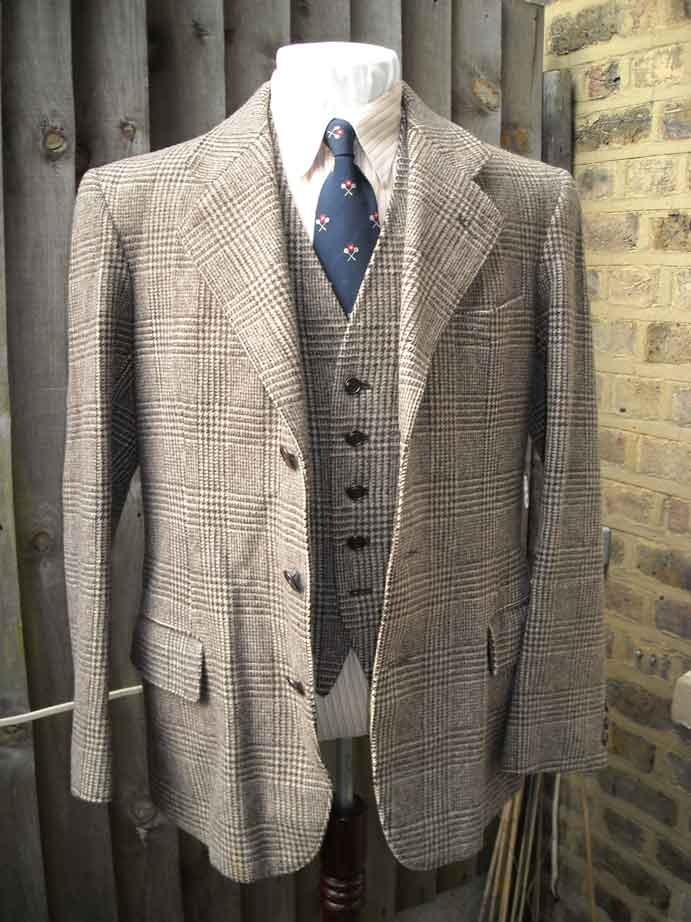

In Happy Odyssey, he described the resultant suit as being "as good as anything that ever came out of Savile Row."

When they reached Lisbon, Carton de Wiart was released and made his way to England, reaching there on 28 August 1943.
As his accommodation in China was not ready, Carton de Wiart spent time in India getting an understanding of the situation in China, especially being briefed by a genuine tai-pan, John Keswick, head of the great China trading empire Jardine Matheson. He met the Viceroy, Field Marshal Viscount Wavell
 and General Sir Claude Auchinleck, the Commander-in-Chief in India. He also met Orde Wingate.Within a month of his arrival back in England, Carton de Wiart was summoned to spend a night at the Prime Minister's country home at Chequers. Churchill informed him that he was to be sent to China as his personal representative. He was granted the rank of acting lieutenant-general on 9 October, and left by air for India on 18 October 1943.
and General Sir Claude Auchinleck, the Commander-in-Chief in India. He also met Orde Wingate.Within a month of his arrival back in England, Carton de Wiart was summoned to spend a night at the Prime Minister's country home at Chequers. Churchill informed him that he was to be sent to China as his personal representative. He was granted the rank of acting lieutenant-general on 9 October, and left by air for India on 18 October 1943.
Before arriving in China, Carton de Wiart attended the 1943 Cairo Conference organized by Churchill, U.S PresidentRoosevelt and Chinese General Chiang Kai Shek. There is a famous picture of these leaders gathered in a Cairo garden, with Carton de Wiart standing behind them in company.
When in Cairo, he took the opportunity to renew his acquaintance with Hermione, Countess of Ranfurly, the wife of his friend from prisoner of war days, Dan Ranfurly. Carton de Wiart was one of the few to be able to work with the notoriously difficult commander of US forces in the China-Burma-India Theatre, U.S Army General Joseph Stilwell.
He arrived in the headquarters of the Nationalist Chinese Government, Chungking (Chongqing), in early December 1943. For the next three years, he was to be involved in a host of reporting, diplomatic and administrative duties in the remote war time capital. He worked with Chiang kai-Shek and when he finally retired he was offered a job by Chiang.
On 9 October 1944, Carton de Wiart was promoted to temporary lieutenant-general and to the war substantive rank of major-general.
Carton de Wiart returned home in December 1944 to report to the War Cabinet on the Chinese situation. He was appointed Knight Commander of the Order of the British Empire (KBE) in the 1945 New Year Honours.
Clement Attlee,
 when he became head of the Labour Government in June 1945, asked Carton de Wiart to stay on in China.He regularly flew out to India to liaise with British officials. His old friend, Richard O'Connor, had escaped from the Italian prisoner of war camp and was now in command of British troops in eastern India. The Governor of Bengal, the AustralianRichard Casey, became a good friend, his wife having nursed Carton de Wiart on one of his many hospital visits in World War I.
when he became head of the Labour Government in June 1945, asked Carton de Wiart to stay on in China.He regularly flew out to India to liaise with British officials. His old friend, Richard O'Connor, had escaped from the Italian prisoner of war camp and was now in command of British troops in eastern India. The Governor of Bengal, the AustralianRichard Casey, became a good friend, his wife having nursed Carton de Wiart on one of his many hospital visits in World War I.
Carton de Wiart was assigned to a tour of the Burma Front, and after meeting Admiral Sir James Somerville, Commander-in-Chief of the British Eastern Fleet, he was given a front seat on the bridge of the battleship HMS Queen Elizabeth for the bombardment of Sabang in the Netherlands East Indies
for the bombardment of Sabang in the Netherlands East Indies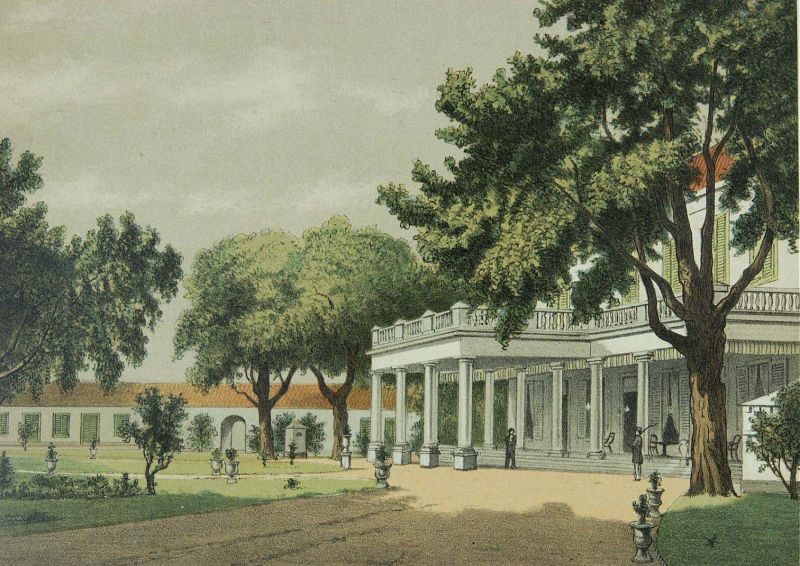 in 1945, including air battles between Japanese fighters and British carrier aircraft. It was the first time HMS Queen Elizabeth had fired her guns in anger since the Dardanelles in 1915.
in 1945, including air battles between Japanese fighters and British carrier aircraft. It was the first time HMS Queen Elizabeth had fired her guns in anger since the Dardanelles in 1915.
 for the bombardment of Sabang in the Netherlands East Indies
for the bombardment of Sabang in the Netherlands East Indies in 1945, including air battles between Japanese fighters and British carrier aircraft. It was the first time HMS Queen Elizabeth had fired her guns in anger since the Dardanelles in 1915.
in 1945, including air battles between Japanese fighters and British carrier aircraft. It was the first time HMS Queen Elizabeth had fired her guns in anger since the Dardanelles in 1915.
A good part of Carton de Wiart's reporting had to do with the increasing power of the Chinese Communists. The historian Max Hastings writes: "De Wiart despised all Communists on principle, denounced Mao Zedong as 'a fanatic', and added: 'I cannot believe he means business'. He told the British cabinet that there was no conceivable alternative to Chiang as ruler of China."
He met Mao Zedong at dinner and had a memorable exchange with him, interrupting his propaganda speech to criticise him for holding back from fighting the Japanese for domestic political reasons. Mao was briefly stunned, and then laughed.
He met Mao Zedong at dinner and had a memorable exchange with him, interrupting his propaganda speech to criticise him for holding back from fighting the Japanese for domestic political reasons. Mao was briefly stunned, and then laughed.
After the Japanese surrender in August 1945, Carton de Wiart flew to Singapore to participate in the formal surrender. After a visit to Peking, he moved to Nanking, the now liberated Nationalist capital, accompanied by Julian Amery, the British Prime Minister's Personal Representative to Chiang.
A visit to Tokyo to meet General Douglas MacArthur came at the end of his tenure. He was now 66 and ready to retire, despite the offer of a job by Chiang. Carton de Wiart retired in October 1947, with the honorary rank of lieutenant-general.
En route home via French Indochina, Carton de Wiart stopped in Rangoon as a guest of the army commander. Coming down stairs, he slipped on coconut matting, fell down, broke his back and several vertebrae, and knocked himself unconscious. He eventually made it to England and into a hospital where he slowly recovered. The doctors succeeded in extracting an incredible amount of shrapnel from his old wounds. He recovered and then went to Belgium to visit relatives.
His wife died in 1949 and in 1951, at the age of 71, he married Ruth Myrtle Muriel Joan McKechnie, a divorcee known as Joan Sutherland, a woman 23 years his junior (born in late 1903, she died 13 January 2006 at the age of 102), and settled at Aghinagh House, Killinardish, County Cork, Ireland, taking up a life pursuing salmon and snipe.
Carton de Wiart died at the age of 83 on 5 June 1963. He left no papers.
He and his wife, Joan, are buried in Caum Churchyard just off the main Macroom road. The grave site is just outside the actual graveyard wall on the grounds of his own home Aghinagh House. Carton de Wiart's will was probated in Ireland at £4,158 and in England at £3,496.
He and his wife, Joan, are buried in Caum Churchyard just off the main Macroom road. The grave site is just outside the actual graveyard wall on the grounds of his own home Aghinagh House. Carton de Wiart's will was probated in Ireland at £4,158 and in England at £3,496.


No comments:
Post a Comment